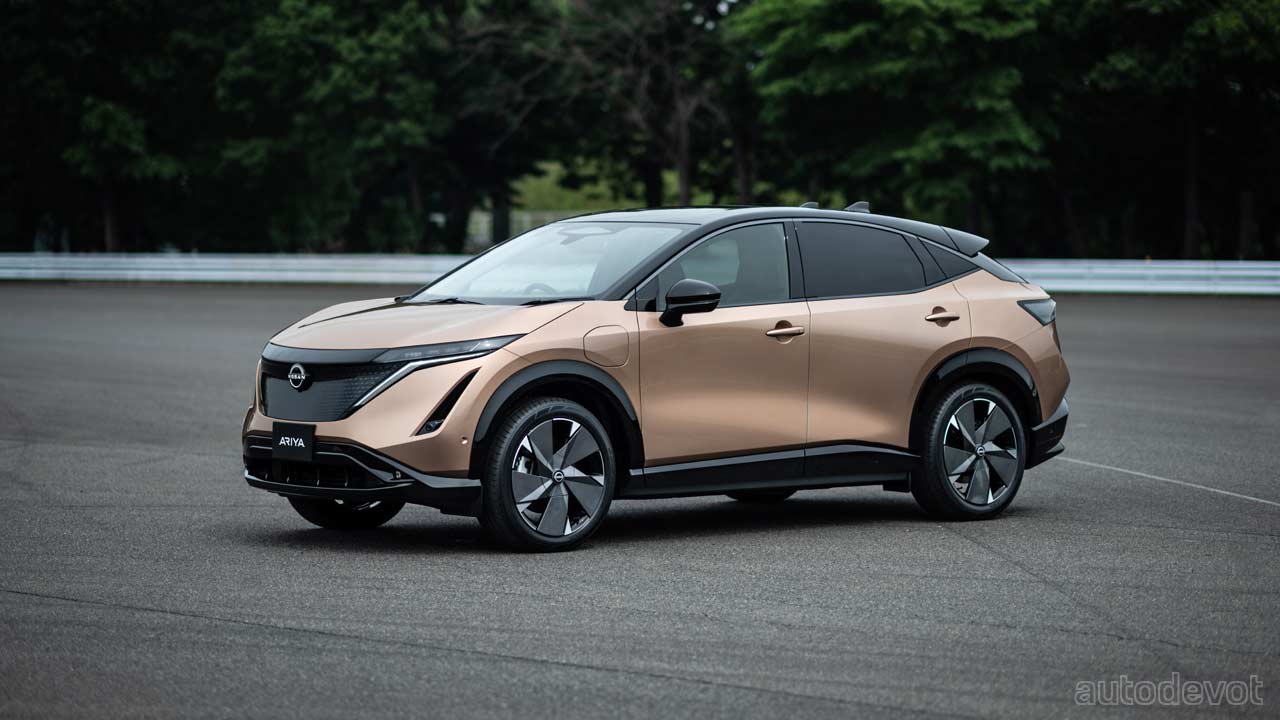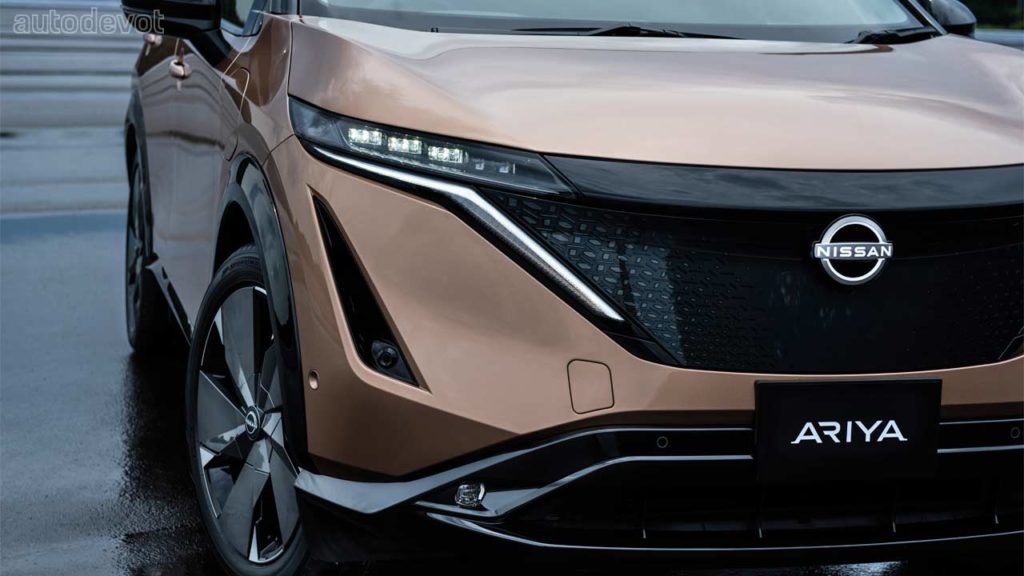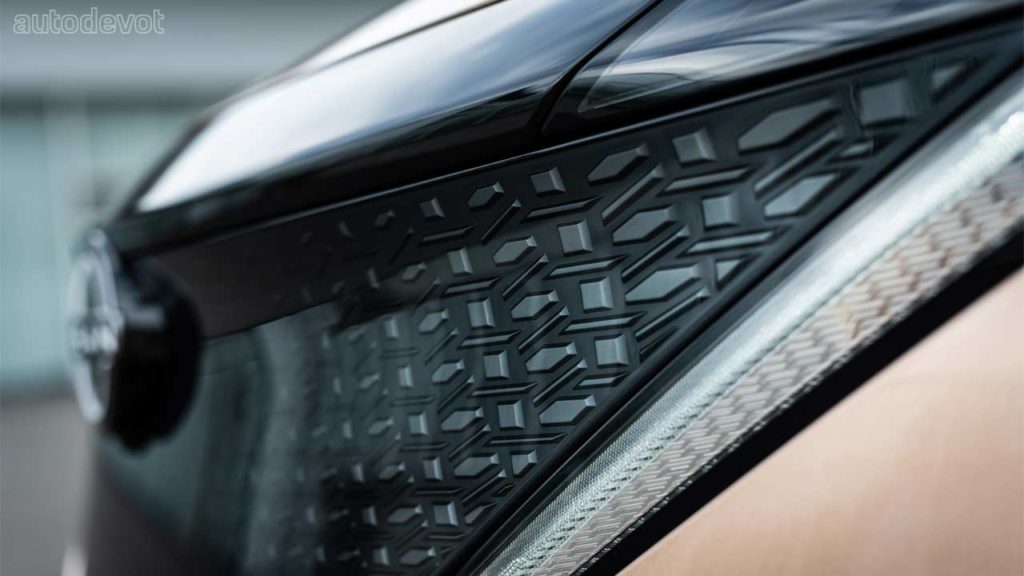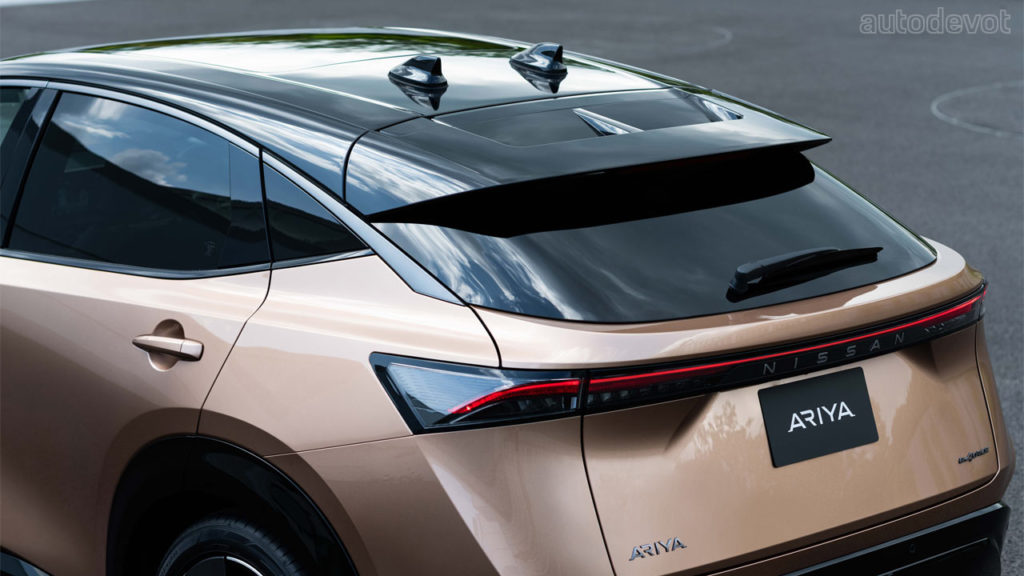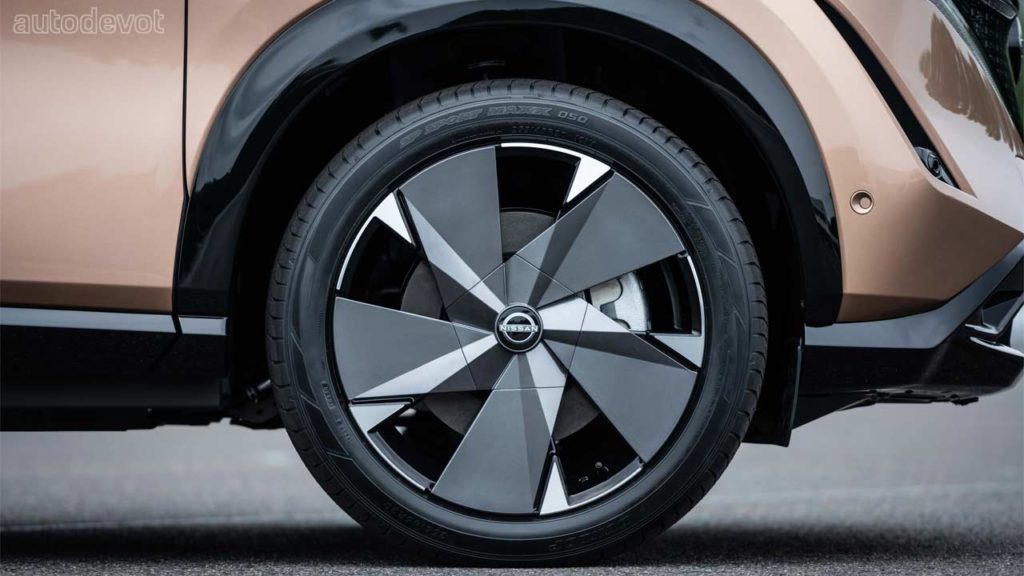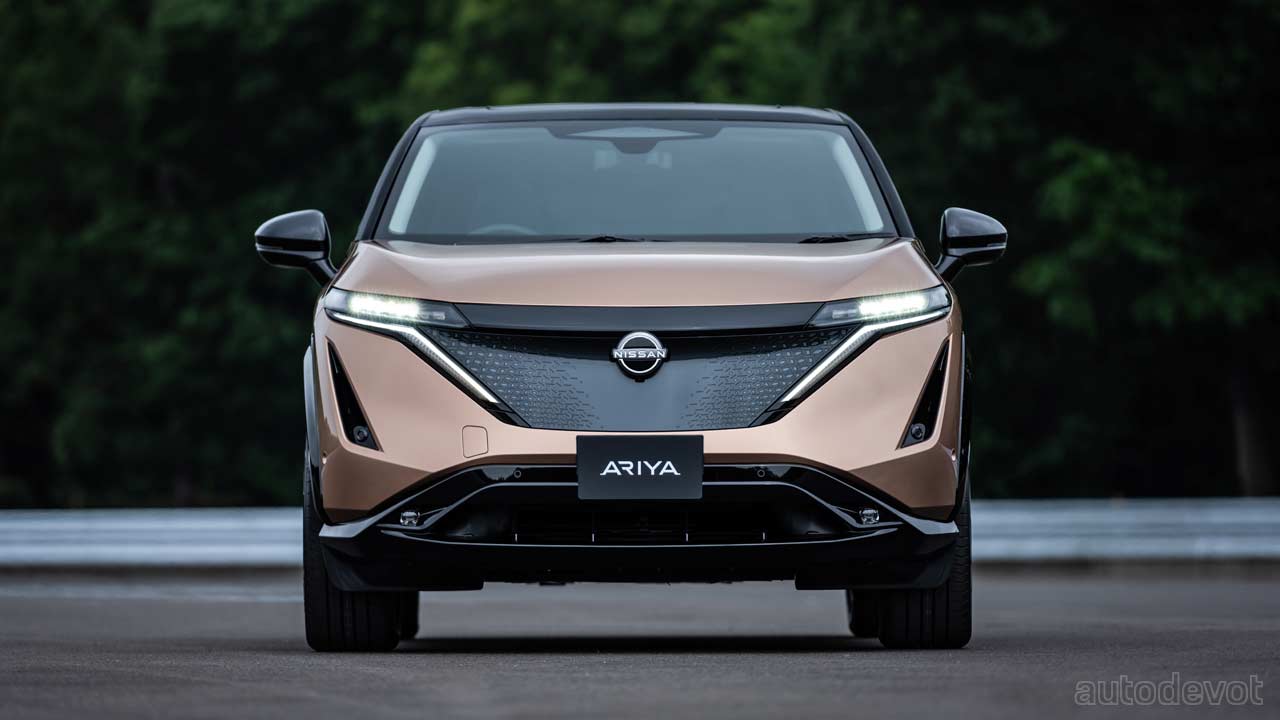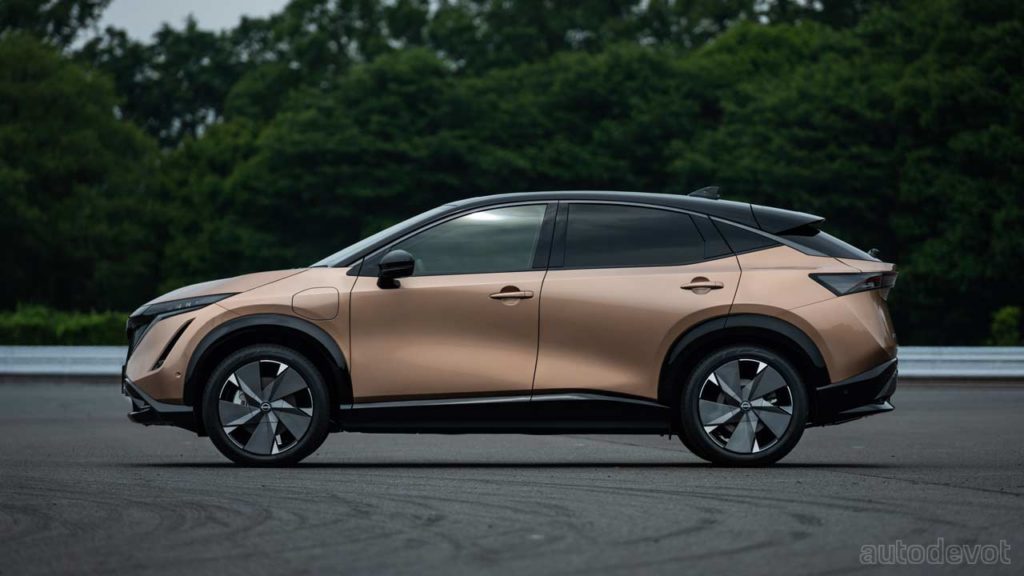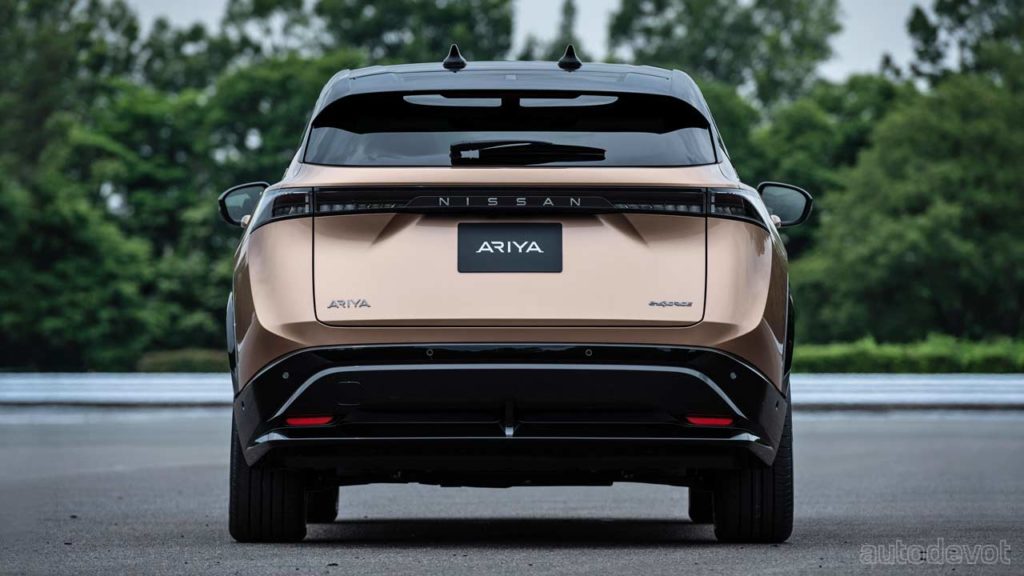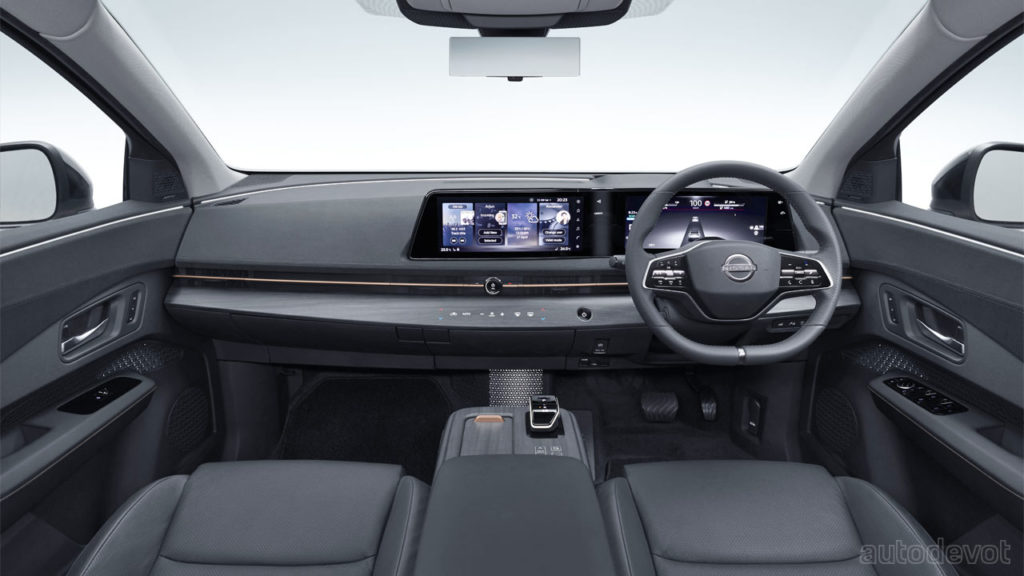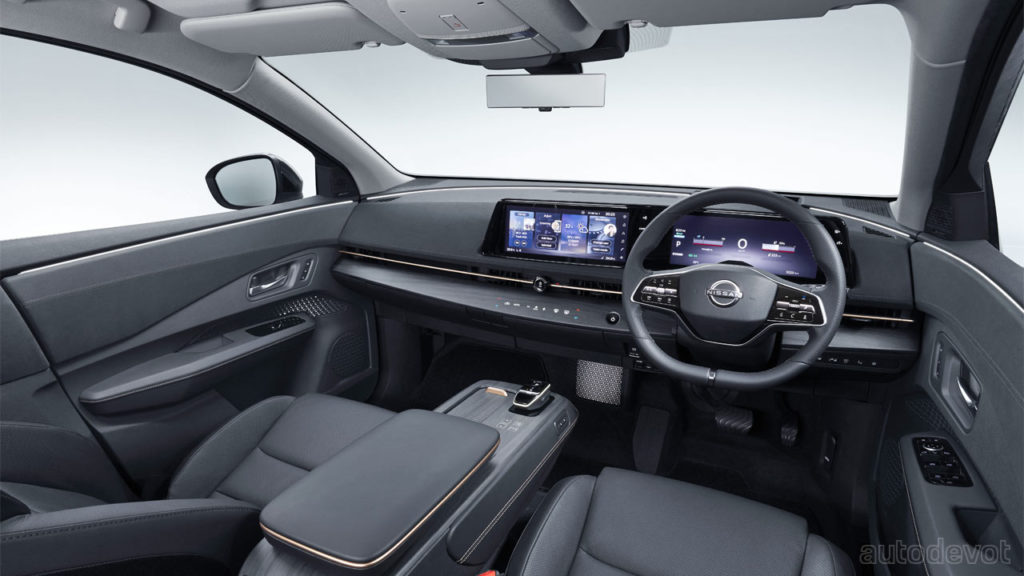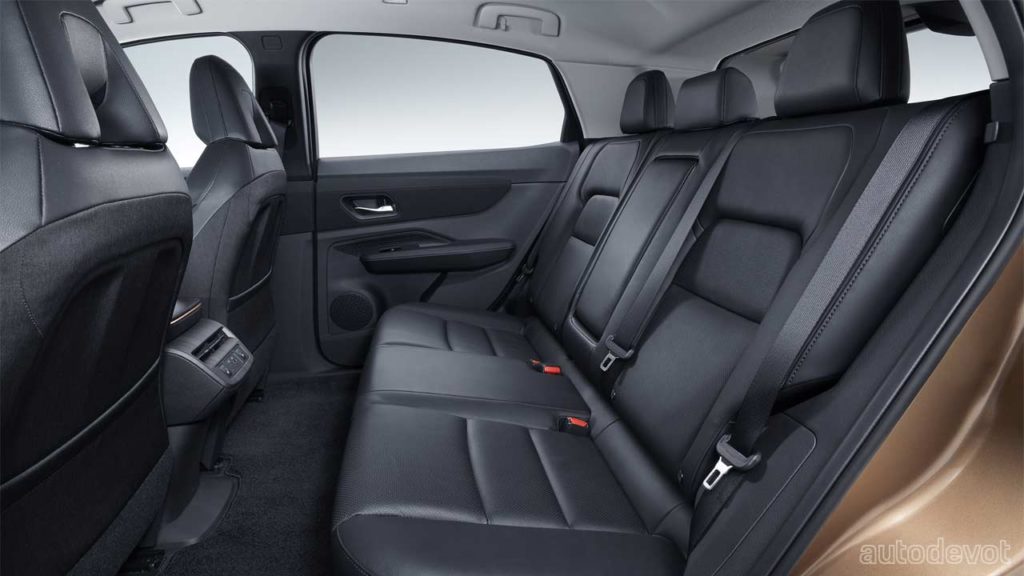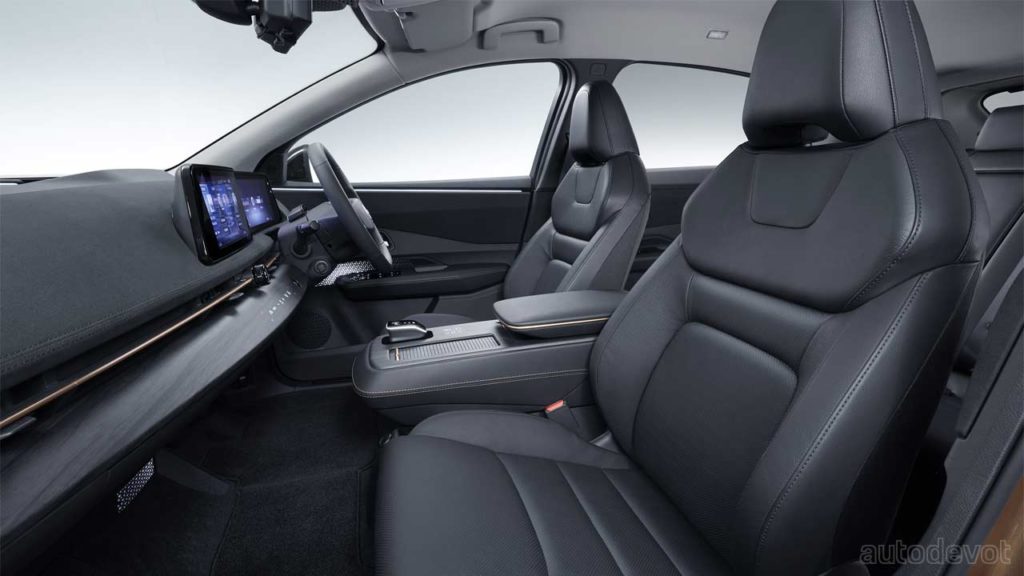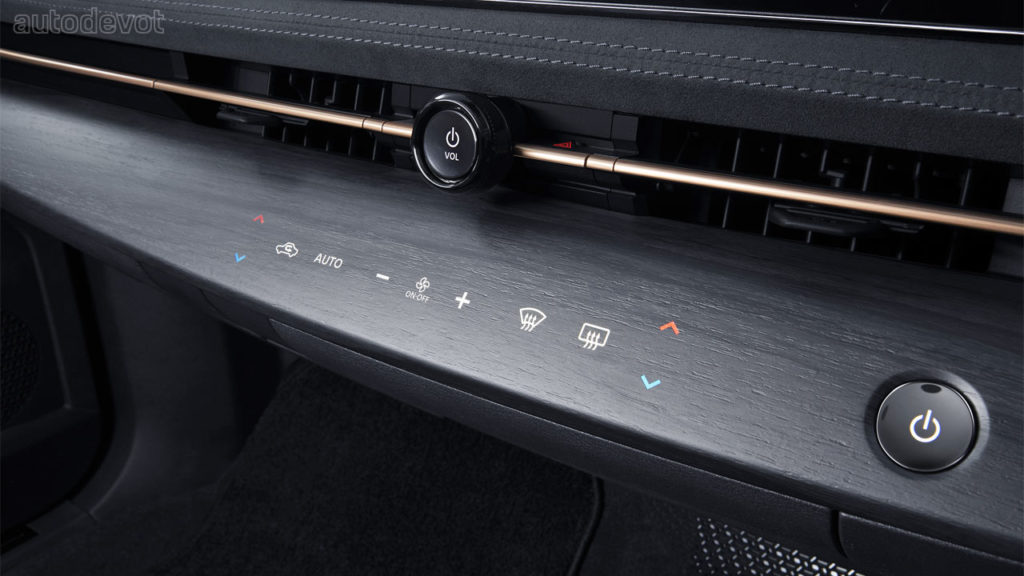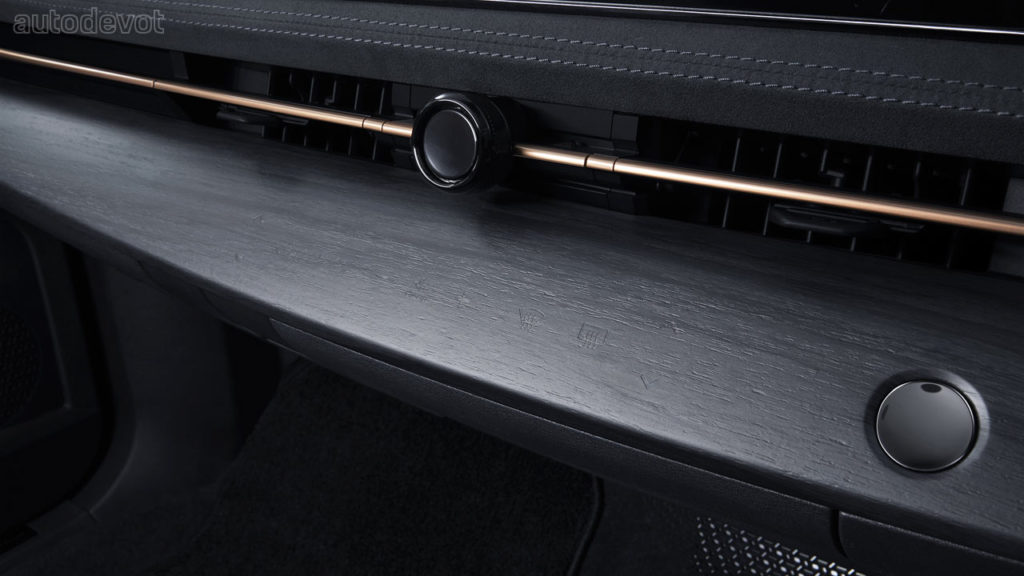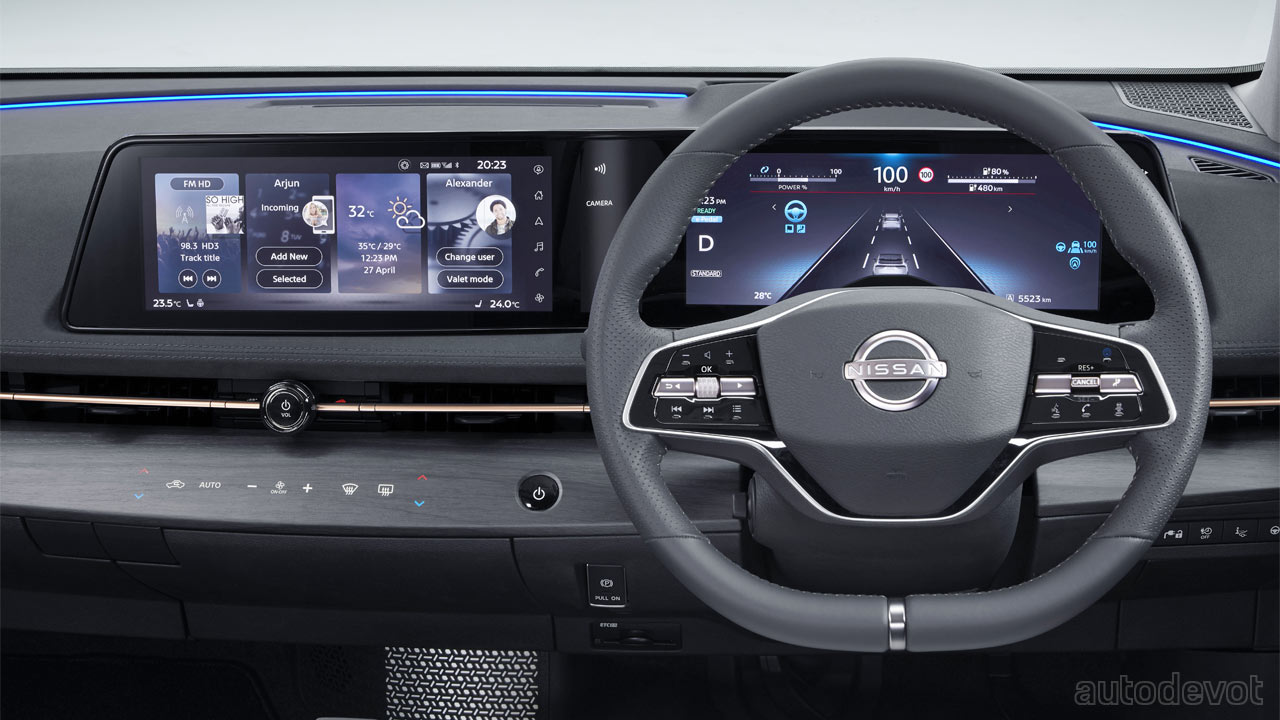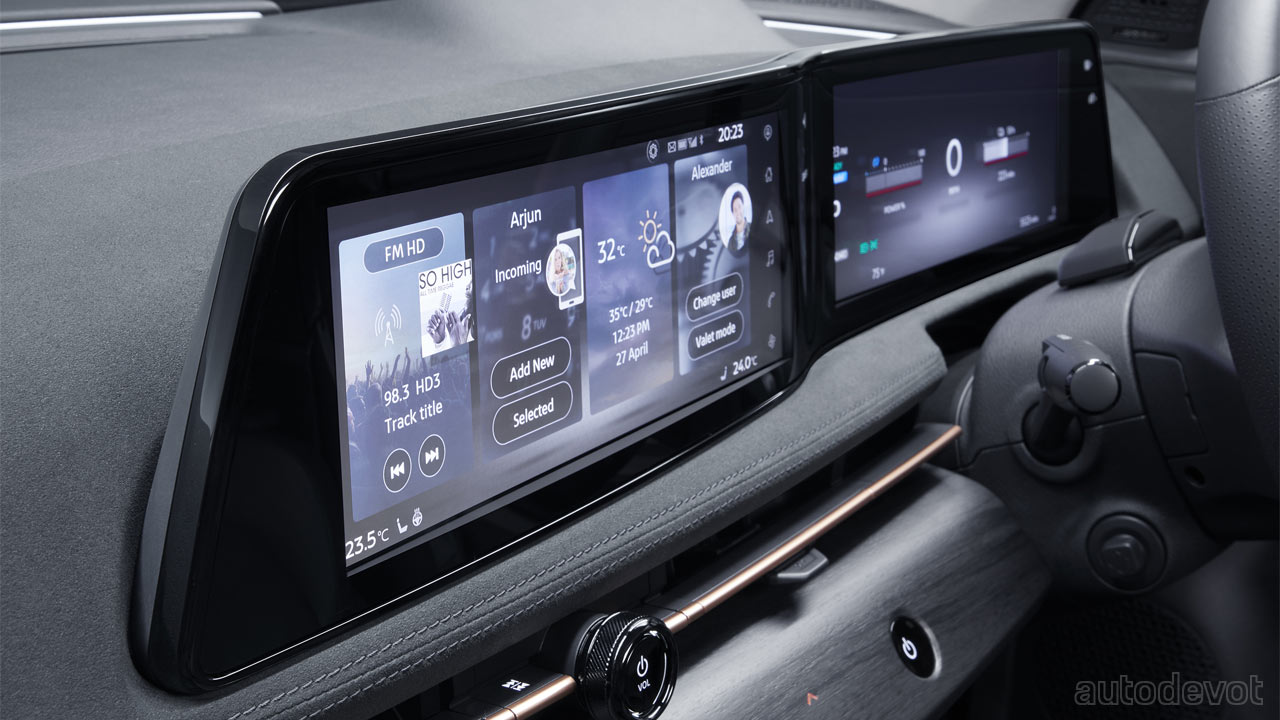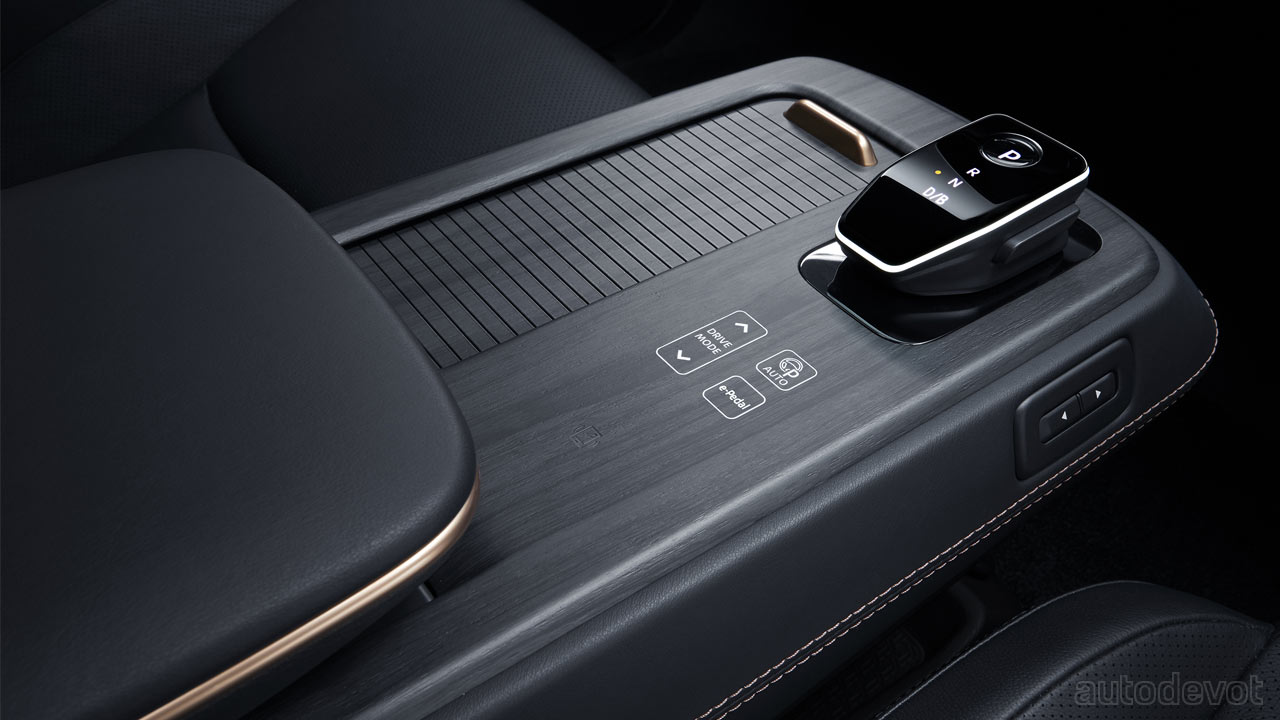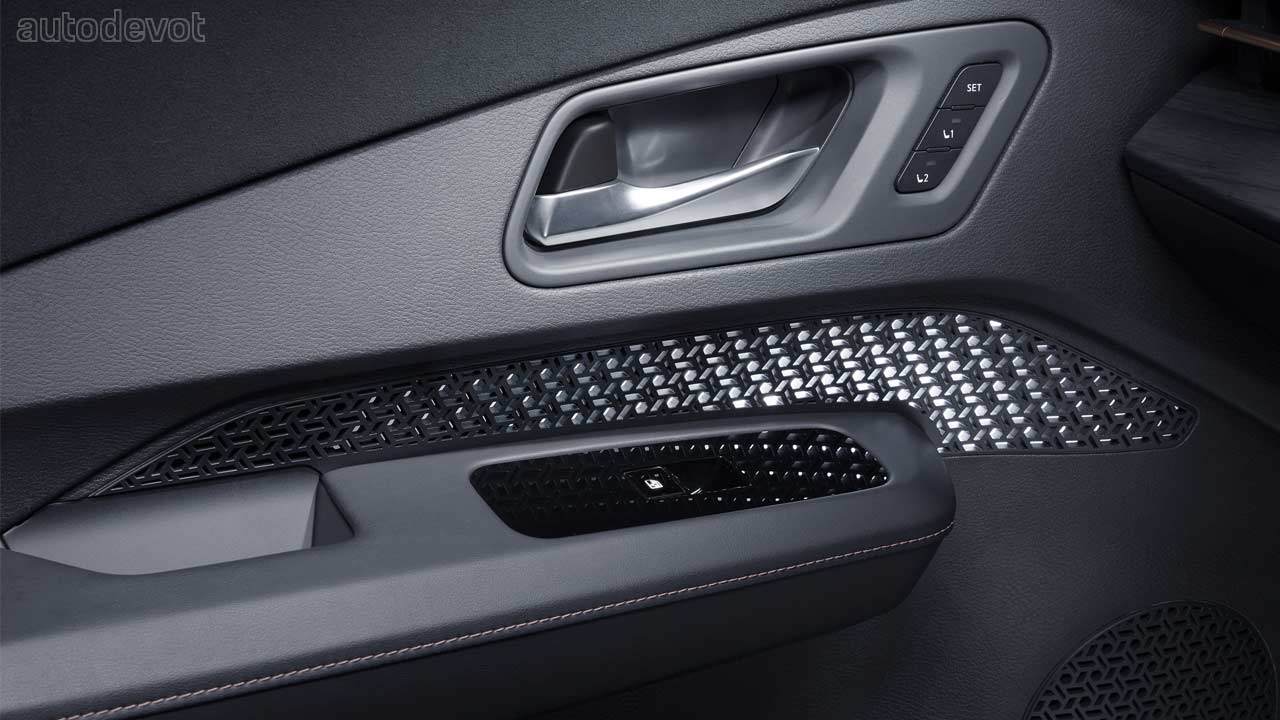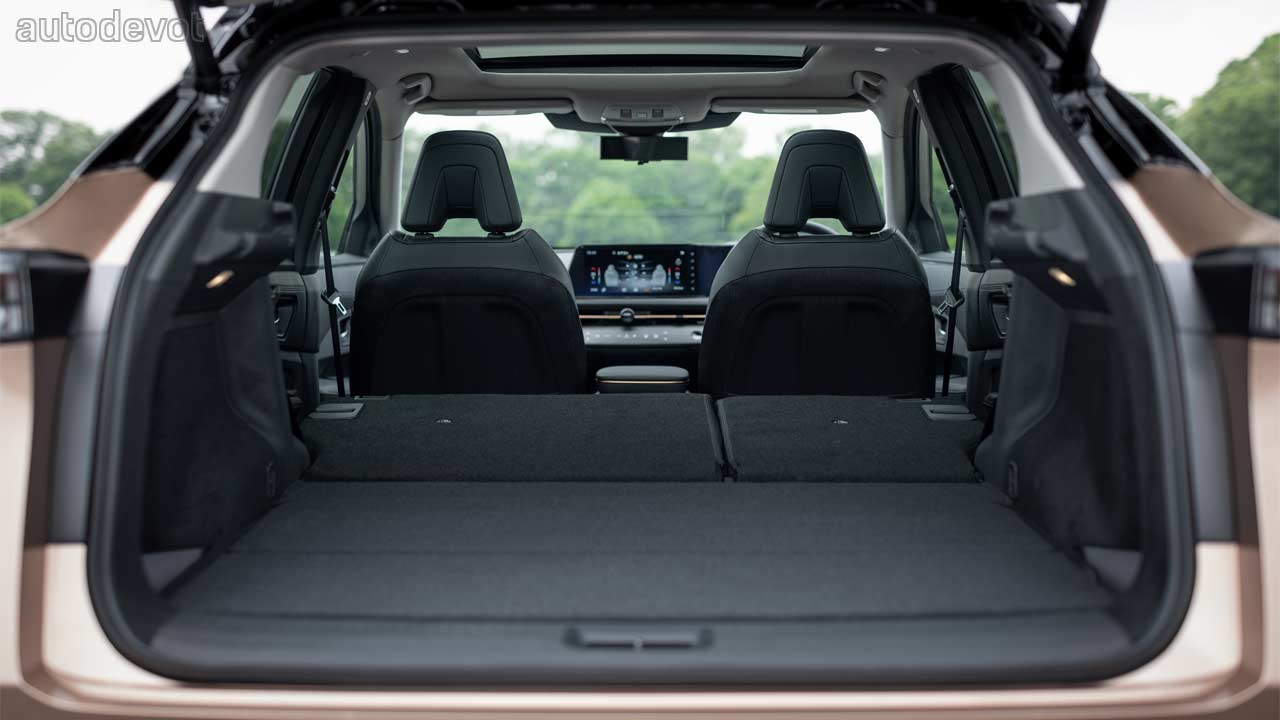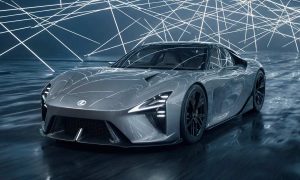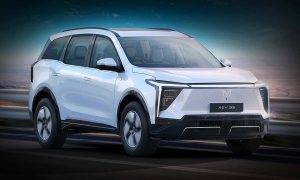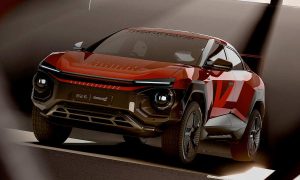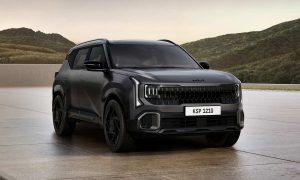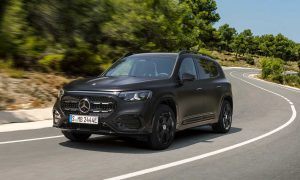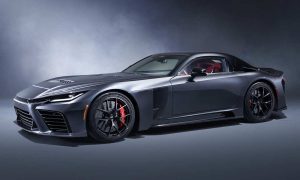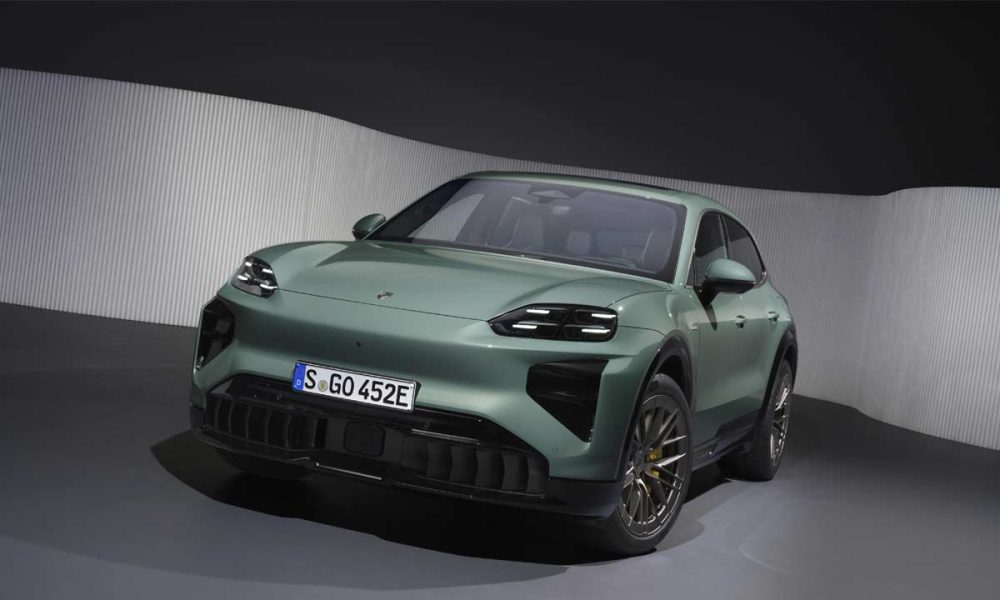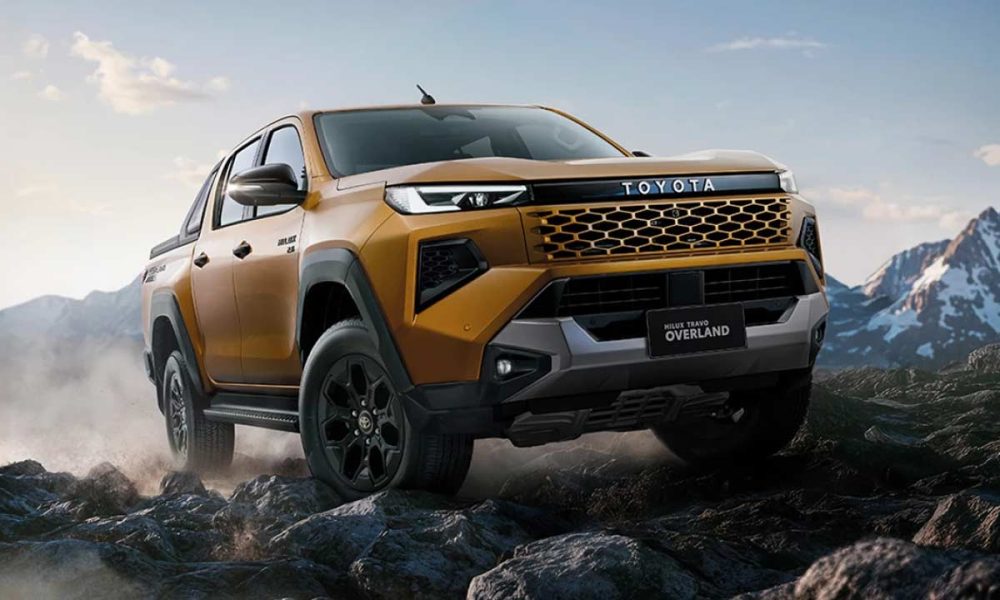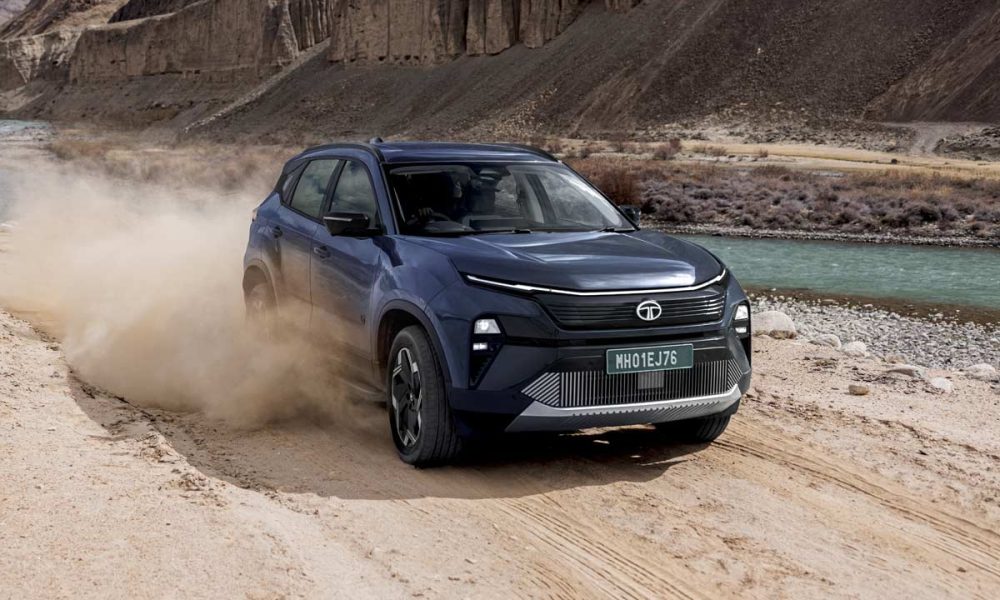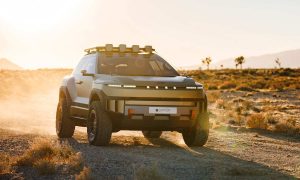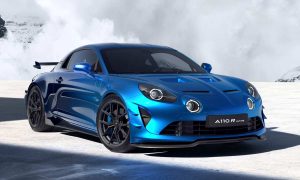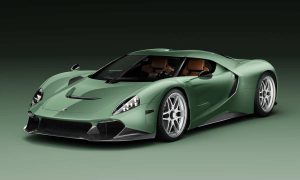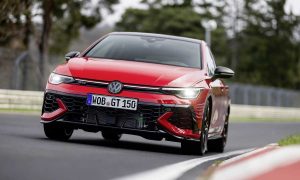Nissan has unveiled the brand’s first all-electric crossover – the Ariya, at soon-to-open Nissan Pavilion in Yokohama. The Ariya we are seeing here is the production version of a concept of the same name that was unveiled at the 2019 Tokyo Motor Show. In fact, the 2019 concept was an evolved version of the IMx concept of 2017.
The Ariya retains most of the design elements from the concept, including the ‘kumiko’ 3D grille pattern, illuminated Nissan brand logo in the centre of the ‘shield’, illuminated shield borders that act as running lights, thin LED headlights comprising 20 mm mini-projectors, 19-inch aluminium wheels (20-inch optional), a swoopy-slopy roofline with an integrated rear spoiler that has two aero scoops, and of course, a thin light band connecting the taillights. Also, notice two shark fin antennas that were not part of the concept.
The example here is presented in a color combination called ‘Akatsuki’, which apparently is a nod to the moment just before dawn, as the sun marks the beginning of a new day. It’s a combination of a copper tone with a black roof. Along with Akatsuki, the Ariya is offered with 9 two-tone combinations, each sporting a black roof.
For those interested to know the dimensions of the Ariya, it measures 4,595 mm in length, 1,850 mm in width and 1,655 mm in height. It boasts a wheelbase of 2,775 mm.
Moving on, the production Ariya’s cabin retains the minimalistic theme of the concept with barely any physical keys to feel. Space appears to be generous, especially the legroom for the rear passengers and also notice the flat floor. However, the rear headroom is yet to be discovered. A 12.3-inch digital instrument cluster and a 12.3-inch infotainment display are mounted on the dashboard side by side.
The Ariya features capacitive touch buttons that blend into the wooden surface when they’re off. As a feedback, they vibrate when touched. Notice the subtle indentation on the wood (click on the right photo to zoom in). The same theme is followed on the centre console too.
Other features include Zero Gravity seats, ProPILOT 2.0 Advanced Driver Assistance Systems, and ProPILOT Remote Park; the latter is for the Japanese market only. As the name suggests, the vehicle can be parked from outside via a dedicated Intelligent Key.
Reducing driver’s workload
The ProPILOT 2.0 expands on the ProPILOT, enabling the drivers to take their hands off the steering wheel under certain conditions, reducing the driver’s workload and stress in single-lane highway traffic. It also supports multi-lane highway driving tasks such as lane changes, passing and highway exiting. The ProPILOT 2.0 uses the navigation system and high-definition 3D map data to detect the road surface, direction and speed limits, adjusting the vehicle speed accordingly. A Driver Monitoring System mounted on the steering column monitors whether the driver is attentive and not sleeping while using the hands-off feature.
Additional safety systems include Intelligent Around View Monitor, Intelligent Forward Collision Warning, Intelligent Emergency Braking, and Rear Automatic Emergency Braking.
Few more features include Amazon Alexa remote functionalities, and a Head-Up Display that is claimed to be the largest full-color displays in the segment. As for the suspension, Nissan promises “an exceptional balance of ride comfort, handling and performance”, especially for the ‘e-4ORCE’ AWD variant that also gets a rear motor.
Powertrains and range
Which then brings us to the business end of the story. The Ariya is available in FWD and e-4ORCE AWD variants, both offer a choice of two battery packs. The FWD’s single electric motor with a 65 kWh battery pack (63 kWh usable) offers an output of 160 kW (217 hp) and 300 Nm (221 lb-ft) of torque. There’s also a 90 kWh battery pack (87 kWh usable), where the output jumps to 178 kW (242 hp) while the torque remains the same. The former is claimed to offer an estimated range (based on WLTC, Japan cycle) of up to 450 km (280 mi) while the latter boasts up to 610 km (380 mi).
The AWD too is available with two battery packs. With the 65 kWh pack, the motors offer 250 kW (340 hp) and 560 Nm (413 lb-ft) of torque. With the larger 90 kWh pack, the motors develop 290 kW (394 hp) and 600 Nm (442 lb-ft) of torque. The estimated ranges are up to 430 km (267 mi) and 580 km (360 mi), respectively. The 394 hp AWD is the quickest among the bunch with a 0-100 km/h (62 mph) time of 5.1 seconds; it has a top speed of 200 km/h (124 mph).
The FWD models get 3 modes: Standard, Sport and ECO. The e-4ORCE gets an additional Snow mode.
Using peak 130 kW charging, the Ariya can recover up to 375 km (233 mi) with a 30-minute quick charge using Japan’s CHAdeMO charging system, Nissan said.
Depending on the variant, the Ariya weighs 1,900 kg – 2,200 kg (4,189 lbs – 4,850 lbs).
The Ariya is scheduled to go on sale in Japan in mid-2021 with an expected price of around 5 million yen (US$ 46,630). It is also expected in Europe, North America and China by the end of 2021.

Leave a Reply
Note: Comments that are unrelated to the post above get automatically filtered into the trash bin.
